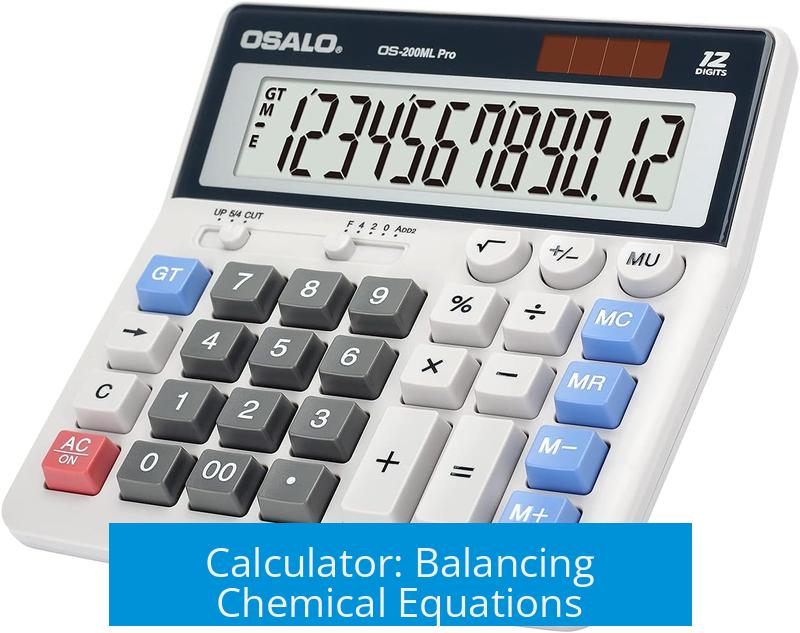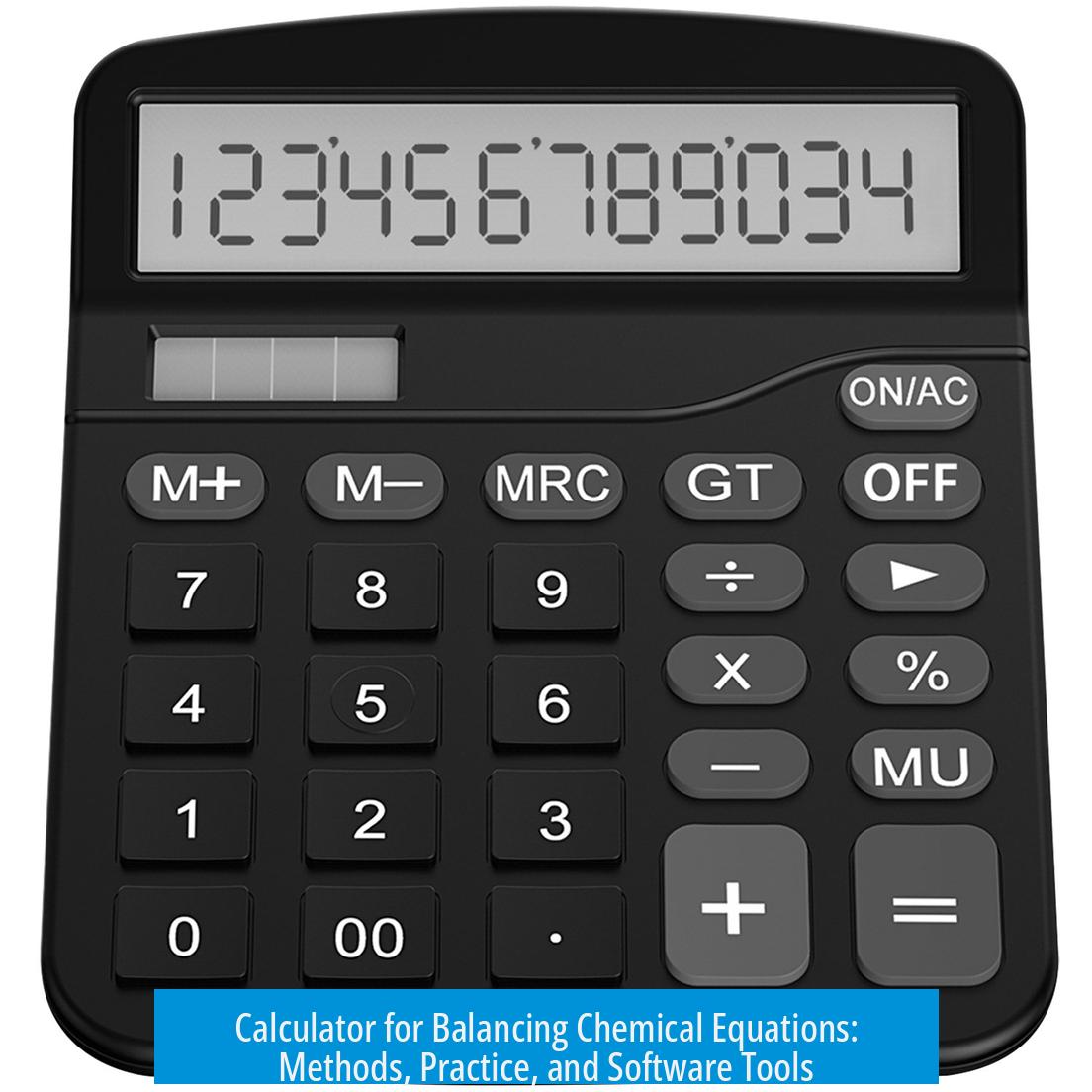Calculator: Balancing Chemical Equations

Balancing chemical equations involves ensuring that the number of atoms for each element is equal on both sides of the reaction. This is a fundamental skill in chemistry that can be mastered through systematic counting and adjusting coefficients.
Understanding the Concept

Balancing chemical equations requires only basic counting skills. For example, if there are 6 oxygen atoms on the reactant side, there must be 6 oxygen atoms on the product side as well. This equality maintains the law of conservation of mass.
Many learners find this concept challenging, but it is straightforward. If you can count atoms accurately, you can balance an equation. Counting ensures that each element is accounted for correctly across the reaction.
Method for Balancing Equations
The standard approach is:
- Count atoms of each element on both sides of the equation.
- Identify elements that do not have matching counts.
- Adjust coefficients (the numbers before compounds) to balance these elements.
For instance, if chlorine atoms do not match, increase or decrease the coefficient before the chlorine-containing compound. Then recount atoms to verify balance.
Skill Development Through Practice
Balancing chemical equations is a skill developed by practice. Students must repeatedly apply counting and adjusting methods to gain proficiency. The process becomes intuitive with experience.
Chemistry courses emphasize this skill as it underpins many advanced topics. Mastery ensures accurate stoichiometric calculations in chemical reactions.
Using Calculators and Software
Modern tools like Excel, specialized software, or programming languages can efficiently balance equations. These tools handle the underlying matrix operations representing element counts.
This computational approach speeds up balancing complex reactions, especially those with many elements and compounds. It complements manual balancing and helps confirm accuracy.
Summary of Key Points
- Balancing equations requires equal atom counts on both sides.
- Count elements then adjust coefficients to balance discrepancies.
- The skill improves with repeated practice.
- Software and calculators can automate balancing tasks using matrix methods.
- Understanding and practicing this skill is essential for chemistry learning.





Leave a Comment